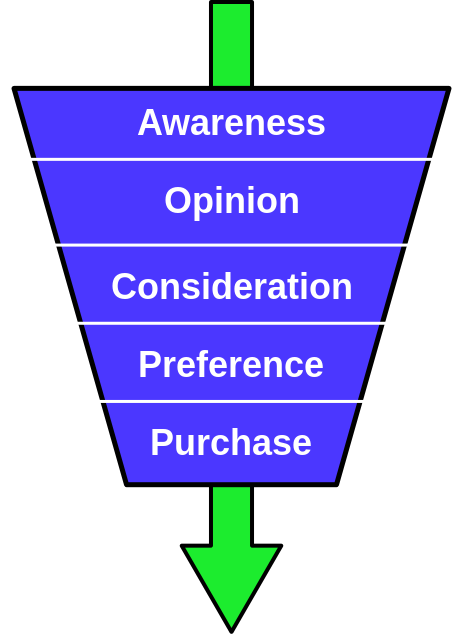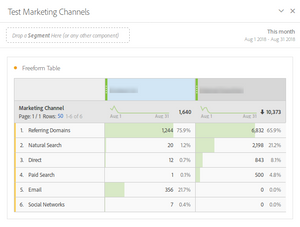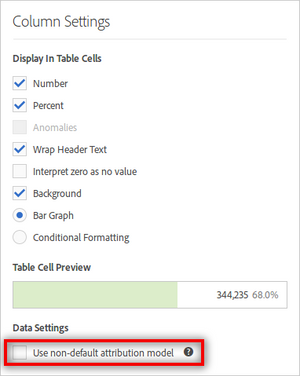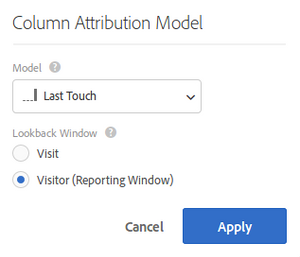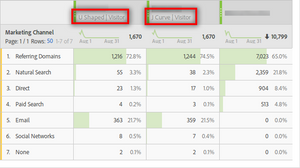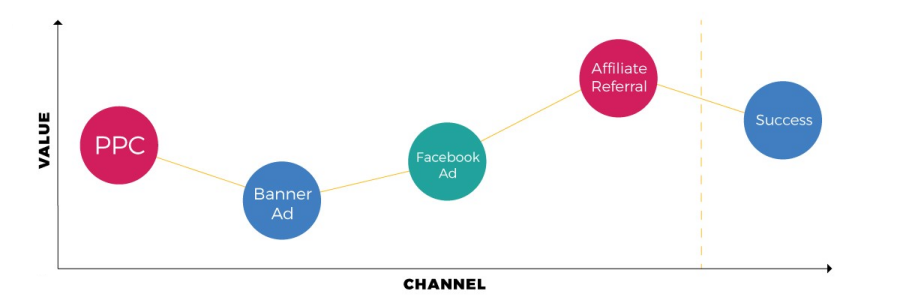
Adobe Analytics Attribution IQ
05 Aug 2018 » Analytics Tips
Until last Thursday, I had an idea of what would this week’s post was going to be about. However, on Friday, it all changed. I saw the internal presentation of Attribution IQ and I changed my mind. I know there are a few series I have not finished, but I think this is more important. But do not worry, I will resume my other series soon. Let’s dive into Attribution IQ!
Attribution modelling
According to the Wikipedia,
[…] attribution is the identification of a set of user actions (“events” or “touchpoints”) that contribute in some manner to a desired outcome, and then the assignment of a value to each of these events.
The main goal is to fine tune marketing spend, increasing the budget of those campaigns that drive more conversion and reducing it for those other campaigns attracting less customers or even stop useless campaigns.
Problem with attribution
In many verticals, a conversion only happens after the customer has done enough research on the product or service he is going to purchase. This means the customer may come to the website from different traffic sources in the course of various days: paid search, social media, newsletter, organic search… So, when he finally converts and purchases, which traffic source (or campaign) gets the credit?
There is no “correct” answer to that, but you need to consider the impact of the how you distribute the credit. Consider the following example:
- Attribution is last touch: the campaign, through which the customer reached your website just before converting, gets all the credit
- Amongst others, you are running an awareness campaign
- This awareness campaign is bringing a lot of potential customers to your website, many of which convert after a while
- Due to the cost of your products, customers need some time before they convert
- The typical last touch is organic search
In this situation, your analysis would show that most of the conversions are due to organic search and very few due to the awareness campaign. Consequently, you would increase the budget for SEO and reduce or remove the budget for the awareness campaign. This will probably be a disaster, because your awareness campaign is driving many potential customers, who, otherwise, would not know of your offering. In the end, you would be getting less conversions instead of more.
Note that I consider “organic search” as a campaign. People see organic traffic as free, but they forget that you need to pay an SEO expert to get your website fine tuned for search engines. To me, this qualifies as a campaign, as it has a budget and a conscious effort.
Solutions to the attribution problem
Data Analytics have been creating different models to solve this issue, some of which have become more popular than others. The idea is to distribute the credit between some or all campaigns or touchpoints, following different patters:
- First and last touch. This is the simplest of all. The conversion is fully credited to the first or the last campaign the customer used to get to your product. All other touchpoints are completely ignored. As I have explained earlier, it has some limitations that you need to consider.
- U-model. Position-base model, which attributes 40% to the first touch, 40% to the last touch and 20% evenly distributed across all other touchpoints.
- J-model. Position-base model, which attributes 20% to the first touch, 60% to the last touch and 20% evenly distributed across all other touchpoints.
- Linear distribution. All touchpoints get equal distribution.
- Time decay. Attribute more the the touchpoints closer to the conversion and less to the touchpoint more distant in the past.
As I said earlier, there is no right or wrong here. But you can use the knowledge you get from these models to make an educated decision on how to distribute your budget.
Adobe Analytics and attribution
Before Attribution IQ (i.e. before July 2018), if you wanted to play with different attribution models, you had different options, from the simplest to the most complex:
- With barebones Adobe Analytics, you were limited to eVars’ attribution: first and last touch. That was probably enough some time ago, but in today’s Internet, you would be missing a big part of the picture.
- You could implement the cross visit participation (CVP) plug-in and get all touchpoints in an eVar (e.g. “Email > PPC > Social > PPC”). Then, you had to download the report into Excel and further process it there.
- The next solution was to get the Engineering Services CVP process implemented. While the 2 previous options did not have a cost, this one had. On the other hand, here you could request multiple attribution models, but you had to provide them in advance.
- If you had Data Workbench, you could do anything you wanted with the data. In particular, it offers multiple attribution models and you can do really cool things with it. It can even ingest offline data and, with a common key, you can even create attribution that spans between online and offline. For example: a loyal customer does some research in the Internet and finally buys in a brick-and-mortar shop.
- As the final option, you could always get the data feed and send it to external tools. Typically, this involved a Hadoop cluster. I do not think I will ever learn ‘R’, but my understanding is that it is perfect for this quest. As with Data Workbench, you can do virtually anything with these tools. However, I think we all agree that it is far from ideal, as you have to switch between multiple tools.
Enter Attribution IQ
Although it was achievable, you had to go through some hoops to get your attribution models in Adobe Analytics. Our competitors were offering some solutions, which were simpler. However, in my humble opinion, Attribution IQ is a game changer. You can now apply multiple attribution models, to multiple metrics and see the results in real-time.
Let’s see how it works. As with any new feature, it is only available in Analytics Workspace. Start by creating a freeform table with the data you want to analyse:
Now, hover over the metric you are going to analyse, click on the wheel icon and select “Use non-default attribution model”:
An overlay pops up and offers two settings: model and lookback window:
You can choose:
- Model: at the moment of writing, there are 10 models, but I would not be surprised if more were added. Read the official documentation for each of them if you need more details about each.
- Lookback window:
- Visit: only consider all the touchpoints during the visit when the conversion happened
- Visitor: consider all touchpoints of the visitor in the reporting window (the dates you have selected for the report) before the conversion
You can even compare models side-by-side:
If you have been using some of the solutions before Attribution IQ (especially, CVP plug-in or ES engagement), you will immediately see how this new feature makes your life incredibly easier. If you have very custom or sophisticated attribution models, you will still need the external tools you are currently using. However, I am not that sure you need such sophisticated algorithms. Unless you have a very specific business reason, all you need is to see which campaigns are performing best. The differences in metrics between one algorithm and another do not tend to be big.
On the other hand, if you have never worked with attribution models, I encourage you start using Attribution IQ immediately. I could not be easier!
